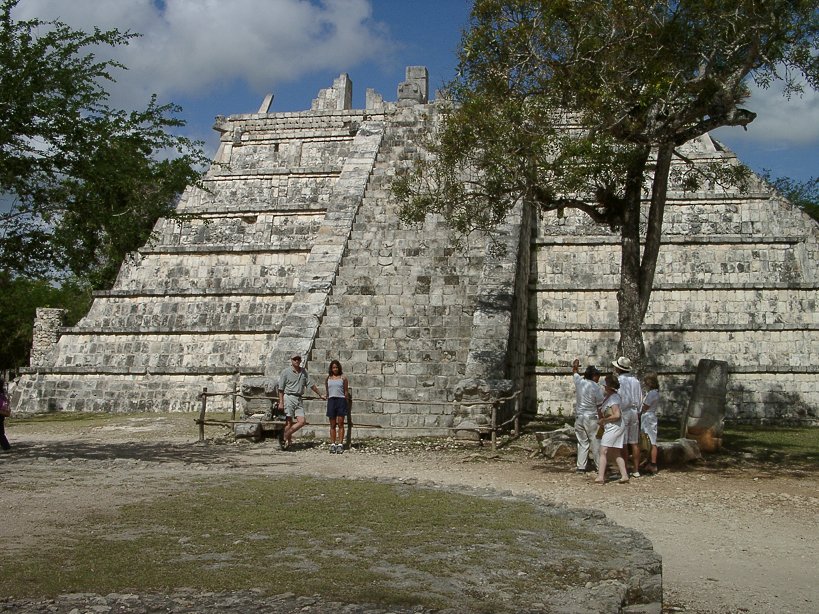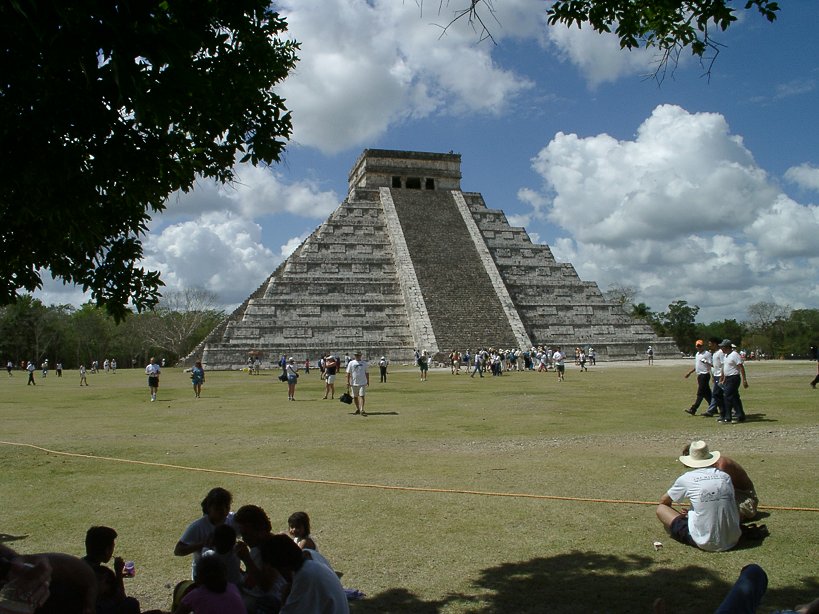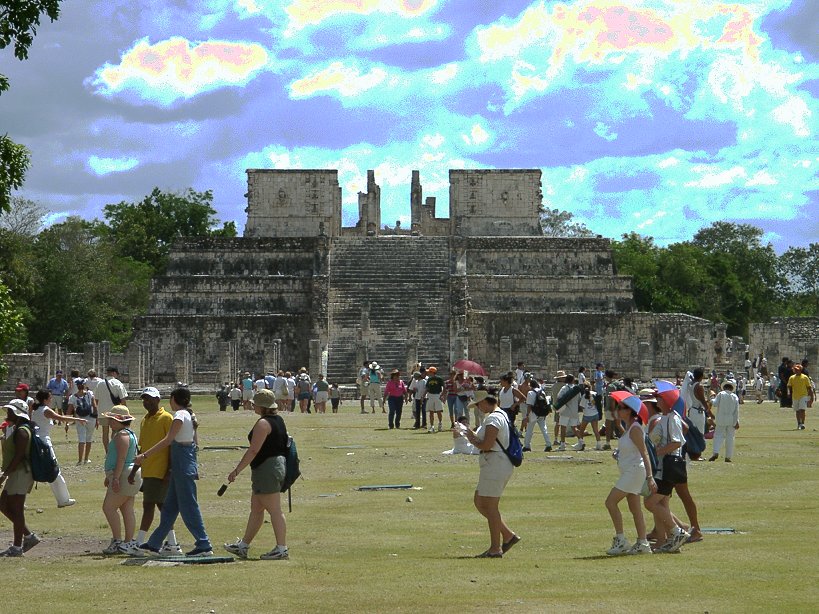Cozumel Topside

Built 1967, 378', 3,250 tons, 29 knots
The Coasties have a great color scheme, don't you think? In 2014, the 45-year-old Gallatin was retired from the USCG and donated to Nigeria, becoming the NNS Okpabana.

The famous Mayan ruins - a small ceremonial platform.

While the ancient Egyptians built each pyramid in a single shot, the Mayans ' construction technique was generational. Starting with a small platform like the one above, every fifty years or so they would build a new structure over it, completely encasing the old one, usually in a completely different style. Thus, each pyramid has a smaller one inside, which has a smaller one inside, which has a smaller one inside ...
The inner pyramids are often preserved in near-perfect condition - an archaeologist's dream. All of the buildings were brightly painted, and traces of the paint remain in spots. Many seem to have been blood red.
Since I first wrote this, I have come to believe that the dynastic Egyptians did not build the pyramids. Someone else built them, long before the dynastic Egyptians occupied the area. The Great Pyramid would be impossible to build with primitive technology; it would probably be impossible for us to build it today! But the South American pyramids do appear to have been built by the native peoples - an extraordinary achievement.

The Indians made many accurate celestial observations, although they had no instruments other than their own eyes.


The local limestone is quite soft and chalky, which would make it easy to shape and carve, but from a structural point of view this material is nearly worthless. I am amazed that the Indians were able to build anything at all out of it, let alone what you see here.
The Mayans never learned to build arched roofs, and because of this most of their buildings, even the largest ones, contain only one or two small rooms.



(The digital camera is dying from the heat. )

Actually, that's a bunch of nonsense made up by the Spanish Conquistadors to justify their own barbarism. The Indians were quite civilized.


For the Culturally-Minded:
We took a direct flight from Cozumel to Chichen Itza, which makes it a half-day trip, and the plane broke down for several hours, just as the concierge at the hotel warned us it would. If you are lucky you might catch a glimpse of things from the air - don't bet on it. The airport tax is a hefty $44 per head on top of the cost of the flight. They don't tell you about that! There are also all-day bus tours from Playa del Carmen.
The ruins are pretty interesting, but don't go on the solstice ( the first day of Spring ) +/- 1 day - big crowds, and everything is roped off. Otherwise, normally you can actually climb up a lot of the monuments at Chichen Itza. The ruins at Tulum are closer, and more picturesque, atop a white cliff overlooking the sea, but Tulum is disappointingly small compared to Chichen Itza. The ruins on the island itself are extremely ruined, from what I have seen of them.
If I were to do it again, I would take the ferry to the mainland, rent a car or jeep in Playa del Carmen, and drive to Chichen Itza and spend two days there. There are nice hotels within walking distance, and with a little guidebook and the extra time, you could do a lot better than with a hurried tour guide. ( You could tag along with a guided group for a while to get the lay of the land, and then strike out on your own. )
The drive to and from Chichen Itza is long, but it runs up the coast to Cancun along the way, so you could stop there too. The main roads are narrow but in good repair. Watch out for the local Policias. Playa del Carmen is a nice place to visit in itself - very pretty and much less touristy than Cozumel or Cancun.



The Museum of the Island has a big map of the island with little lights on it, one for each souvenir shop. Ha - just kidding! That many lights wouldn't fit. Seriously, the museum is not very big, but it has lots of interesting displays, and the locals are justifiably proud of it, as they point you from one room to the next. It's a good way to spend a few hours on your last day.


That's all !


